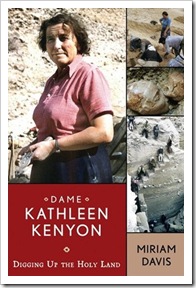This discovery is reported by the Jerusalem Post, Haaretz, and CNN. The following is the beginning of the press release of the Israel Antiquities Authority.
A church that dates to the Byzantine period which is paved with breathtakingly beautiful mosaics and a dedicatory inscription was exposed in an archaeological excavation the Israel Antiquities Authority is conducting near Moshav Nes-Harim, 5 kilometers east of Bet Shemesh (at the site of Horvat A-Diri), in the wake of plans to enlarge the moshav.
According to archaeologist Daniel Ein Mor, director of the excavation on behalf of the Israel Antiquities Authority, “The site was surrounded by a small forest of oak trees and is covered with farming terraces that were cultivated by the residents of Nes-Harim. Prior to the excavation we discerned unusually large quantities of pottery sherds from the Byzantine period and thousands of mosaic tesserae that were scattered across the surface level”.
The excavation seems to have revealed the very center of the site, which extends across an area of approximately 15 dunams, along the slope of a spur that descends toward Nahal Dolev.
During the first season of excavation (November 2008) the church’s narthex (the broad entrance at the front of the church’s nave) was exposed in which there was a carpet of polychrome mosaics that was adorned with geometric patterns of intertwined rhomboids separated by flower bud motifs. Unfortunately, at the conclusion of the excavation this mosaic was defaced and almost completely destroyed by unknown vandals. During that excavation season a complex wine press was partly exposed that consists of at least two upper treading floors and elongated, well-plastered arched cells below them that were probably meant to facilitate the preliminary fermentation there of the must. Part of the main work surface, which was paved with large coarse tesserae, was exposed at the foot of these cells. A complex wine press of this kind is indicative of a wine making industry at the site; this find is in keeping with the presence here of a church and is consistent with our knowledge about Byzantine monasteries in the region during this period (sixth-seventh centuries CE).
The press release continues here.
The IAA has posted (temporary link) three high-resolution images:
1) an aerial view of the site;
2) workers cleaning the church floor;
3) a close-up of the church’s dedicatory inscription.
A direct link to the images is here.
HT: Joe Lauer


